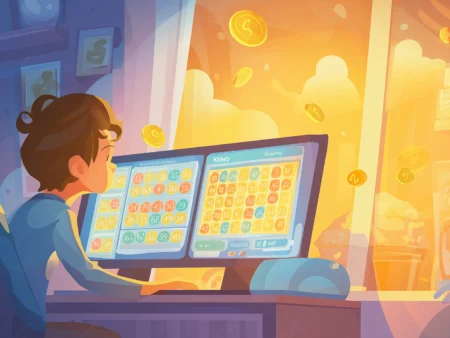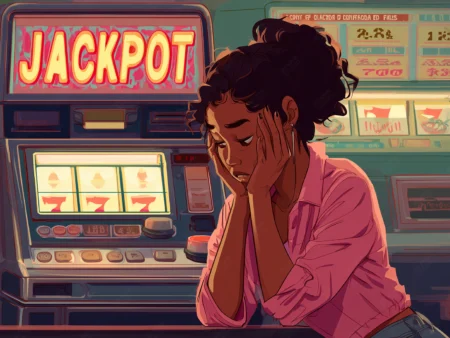Walk up to a craps table for the first time and it might feel like you’re staring at a control panel from a sci-fi movie. Mirrored layouts, flashing chips, zones with names like “Field” and “Come,” and players yelling “yo eleven!”, it’s pure sensory overload.
But here’s the truth: once you understand the layout, craps isn’t just thrilling, it’s one of the most strategic and player-friendly games in the casino. That chaotic-looking surface? It’s actually a well-organized betting map designed for speed, flow, and high-paced action.
In this guide, we’ll show you exactly how the craps table layout works:
- Where each key betting zone is
- What each section means
- When and why to use them
- How to avoid rookie missteps that cost chips
Whether you’re gearing up for your first real-money session or want to level up your online craps play, this walkthrough will give you the edge.
Pro Tip: Want to lock in the basics before diving into bet placement? Check out our How to Play Craps for Beginners guide for a fast, no-fluff rules refresher.
Table of contents
- Understanding the Craps Table Layout (Diagram Included)
- Craps Bets Explained: What Goes Where and Why It Matters
- The Flow of the Game, When to Place What
- What the Diagram Doesn’t Show: Table Etiquette & Dealer Interaction
- Build Your Skills With Our Craps Strategy Guide
- Play Craps Online, With Less Noise and Better Bonuses
- Craps Table Layout FAQs
Understanding the Craps Table Layout (Diagram Included)
Craps might be one of the loudest, most energetic games in the casino, but beneath the noise is a smart, efficient layout. Everything on that felt serves a purpose: tracking bets, guiding flow, and keeping the game moving for players and dealers alike, whether you’re at a brick-and-mortar casino or playing online.
So what does a standard craps table layout actually look like? And more importantly, how do you read it like someone who knows what they’re doing?
Download or View the Annotated Craps Table Layout

Here’s how the standard craps table layout is structured and what each betting zone means:
- Pass Line – The most popular starting bet. You’ll find it front and center, closest to the rail. It’s where most players begin, and cheer together.
- Don’t Pass Bar – Positioned just behind the Pass Line. This is where you bet against the shooter, hoping they roll a 2, 3, or 12 on the come-out.
- Come & Don’t Come Areas – Located toward the center of the table. These function like Pass/Don’t Pass but can be made after the point is established.
- Field Bet Box – Large and attention-grabbing, often at the bottom third of the table. These are one-roll bets with instant outcomes.
- Place Bets Section – Spanning across the number boxes (4, 5, 6, 8, 9, 10). Here, you’re betting that a specific number rolls again before a 7.
- Proposition Bets – Right in the middle of the table, shared by both sides. These include one-roll bets like “yo 11,” snake eyes, and the horn, high risk, high house edge.
- Big 6 and Big 8 – Often found in the corners. These are simplified bets on 6 or 8, but with worse payouts than placing the numbers directly. Most savvy players avoid them.
The layout isn’t just design, it’s instruction. Once you know where each bet lives and why, the table becomes a tool instead of a trap.
Looking to test these bets in a no-pressure environment? Our Craps Strategy Guide walks you through how to use each zone strategically, whether you’re on a hot streak or managing cold dice.
Two Sides, One Purpose, Mirrored Layout Explained
Ever wonder why the craps table looks like it’s been split in half? It’s not just for symmetry. The layout is mirrored so that two dealers can manage each side simultaneously, allowing more players to get in on the action without crowding one end.
Here’s how it works:
- Identical betting zones exist on both sides, each with its own Pass Line, Don’t Pass, Come/Don’t Come, and Place areas.
- The Proposition zone in the center is shared across both sides.
- Dealers run their half, but all players are betting on the same shooter and the same dice rolls.
This mirrored setup keeps the table fast and fluid. You’re not getting different odds or outcomes depending on your position, it’s all one unified game.
Playing online? Most craps platforms simplify this layout for mobile and desktop play, but the core structure remains. For new players, we recommend focusing on just one side of the layout to start, it’s cleaner, easier to follow, and less overwhelming.
Craps Bets Explained: What Goes Where and Why It Matters
Understanding the layout is one thing. Knowing which bets belong where, and why they matter, is where you start developing real edge as a craps player.
This isn’t a dictionary of definitions. It’s a straight-up walkthrough of how different types of players use these bets, when they’re smart, and when they’re just burning chips for the thrill.
Pass Line & Don’t Pass, The Starting Point
What they are:
The Pass Line is the backbone of craps. It’s the bet most players make before the come-out roll, and it wins if the shooter rolls a 7 or 11. It loses on 2, 3, or 12. If another number hits, that becomes the point, and now you’re rooting for the shooter to roll it again before hitting a 7.
Don’t Pass is the opposite. You’re betting against the shooter. You win if they crap out early (2 or 3), push on 12, and win if a 7 comes before the point is hit.
When to use them:
Both bets must be made before the come-out roll. They’re the most reliable plays on the table, with a low house edge and consistent action.
Why the Pass Line is the beginner’s go-to:
It’s easy to understand, keeps you involved in the game’s core rhythm, and you’re cheering with the table, not against it. That shared momentum is part of what makes craps electric.
Come & Don’t Come, The Mid-Round Mirrors
Same logic, different timing.
Come and Don’t Come bets are essentially clones of Pass/Don’t Pass, but you place them after the come-out roll, once the point has already been established.
How it works:
Let’s say the point is 5. You place a Come bet. The next roll is 9, now 9 is your personal point. You win if it hits before a 7. The Don’t Come bet works the same way but in reverse, you win if a 7 comes before your number repeats.
Why use them:
These bets let you layer in additional action as the round progresses. They also allow you to take odds behind multiple numbers, a smart, low-edge way to stack value when the table’s hot.
Place Bets, Betting on Hot Numbers
Where they go:
You’ll find Place Bets in the numbered boxes near the top: 4, 5, 6, 8, 9, and 10. You’re betting that your chosen number will hit before a 7.
When it’s smart to place the 6 or 8:
Simple math: 6 and 8 hit more frequently than any number except 7. That’s why experienced players “buy” or place the 6 and 8 regularly, it’s steady, lower-variance action with a solid payout (7:6 odds).
Why do you buy 6 and 8 in craps?
Because they hit often and offer strong returns relative to risk, especially for players looking to grind, not gamble.
Player tip: Avoid placing the 4 or 10 unless you’re chasing a higher payout or hedging with Lay bets. They pay more (9:5), but they don’t show up nearly as often.
Field Bets, One-Roll Thrills
Flashy, fast, and risky.
The Field bet is a one-roll wager, if the shooter rolls a 2, 3, 4, 9, 10, 11, or 12, you win. If they hit 5, 6, 7, or 8, you lose. Some tables pay double or even triple on 2 or 12.
Why it’s appealing:
Instant gratification. No waiting, no drawn-out betting trees. But the odds are tilted in the house’s favor, and chasing Field bets for too long is a quick way to drain a stack.
When to use it:
If the dice are rolling hot and you want a small burst of action, it’s fine. Just don’t rely on it to carry your session.
Proposition Bets, Where Dreams Go to Die (Mostly)
Dead center of the table, Proposition Bets cover all the exotic one-roll outcomes: snake eyes (2), “yo” (11), boxcars (12), any craps, hard ways, and so on.
The appeal:
Massive payouts. “Yo 11” pays 15:1. Hard 10 pays 7:1. Horn and C & E bets combine multiple high-risk outcomes into one roll.
But here’s the catch:
Most of these bets come with a brutal house edge, often 10% or higher. That’s why seasoned players call this section the sucker zone. Fun for a few chips. Dangerous if you’re serious.
Why is 11 called “yo” in craps?
Because “eleven” sounds too much like “seven” at a loud table, so dealers call it “yo” for clarity.
What is the C and E bet in craps?
A one-roll bet: half goes to any craps (2, 3, or 12), half to the 11. If either hits, you win one side. If not, you lose the full bet.
Use these for entertainment, not edge. You’re better off putting that same chip behind a Pass Line bet with odds if you’re playing to win.
The Flow of the Game, When to Place What
One of the most common mistakes new craps players make? Placing the right bet at the wrong time.
Craps is all about rhythm. Once you understand when the come-out roll happens, when the point is live, and which bets are “working,” everything else clicks into place. It’s not just what you bet, it’s when.
Here’s how a standard round unfolds, and when to jump in.
Step 1: The Come-Out Roll
This is the first roll of a new round. The shooter is trying to establish a point.
Your move:
- Place a Pass Line bet before the come-out roll if you’re backing the shooter.
- Go with Don’t Pass if you think the shooter will crap out early (2, 3, or 12).
What happens next:
- 7 or 11: Pass Line wins
- 2, 3, or 12: Pass Line loses (Don’t Pass wins on 2 or 3, pushes on 12)
- Any other number (4, 5, 6, 8, 9, or 10): That number becomes the point
This is when the rhythm starts, get your base bets in now to stay in sync with the table.
Step 2: Point Is Established, Game On
Once a point is set, the shooter’s goal is to hit that number again before rolling a 7. Now the real strategy comes into play.
Now’s the time to:
- Add Come or Don’t Come bets
- Place bets on numbers you expect to hit, typically the 6 or 8
- Take Odds Bets behind your Pass or Come bet (lowest house edge on the table)
This is when skilled players start layering bets, pressing winnings, and managing exposure.
Step 3: Which Bets Stay Live (and Which Don’t)
Keeping track of which bets are still active helps you avoid costly surprises. Here’s a quick breakdown:
| Bet Type | Active Until… |
| Pass/Don’t Pass | Until the point is hit or a 7 rolls |
| Come/Don’t Come | Until your personal point is hit or a 7 rolls |
| Place Bets | Stay live until removed or a 7 rolls |
| Field Bets | One-roll only |
| Proposition Bets | One-roll only (unless otherwise stated) |
What’s a “working” bet?
A working bet is active on the next roll. Most bets are always working, unless you declare them off. Some players temporarily turn off Place or Odds bets during the come-out roll to reduce risk. Always tell the dealer if you want a bet turned off.
Step 4: Lay Bets, The Sharp Way to Fade the Table
Want to bet against a number showing before a 7? That’s a Lay Bet. It’s the inverse of a Place Bet, you’re wagering that a specific number won’t hit.
What is the lay on a craps table?
It’s a bet against a point number (e.g., 4, 10). You’re saying, “I’ll risk more to win less, because I think a 7 will come first.” It’s a savvy move when the table’s cold.
Are Lay Bets always working?
Yes, unless you say otherwise, Lay Bets are always live, even on the come-out roll. Want to wait until the point is set? Just tell the dealer to “turn them off” temporarily.
Sharp players use Lay Bets selectively to fade streaks or hedge exposure, especially in high-variance sessions.
What the Diagram Doesn’t Show: Table Etiquette & Dealer Interaction
The layout tells you where to bet. What it doesn’t tell you is how not to look like a rookie while doing it.
Craps has its own unspoken code. Break it, and you’ll feel the table shift, from annoyed side-eyes to outright groans. Respect it, and you’ll blend in like a regular who knows the game and the room.
Let’s walk through the essentials of craps etiquette and dealer interaction, so you stay in rhythm and earn respect, not lectures.
Where to Stand, and When to Move
Craps tables are shaped like a horseshoe. Dealers are on the inside. Players crowd the outer edge. The stickman runs the dice and center bets; base dealers handle payouts and side bet zones.
Here’s how to stay in the right zone:
- Stand behind the Pass Line or Don’t Pass Bar, closest to the bets you plan to make
- Don’t lean over the rail or hover near the prop bets
- No drinks on the table rail, that’s a fast track to a spill and a warning
- Not betting? Step back. Don’t crowd players in action
How to Place Chips Without Annoying the Dealer
Some bets are self-serve. Others must be handed off to the dealer. Know the difference, or you’ll slow down the game (and draw attention for the wrong reasons).
| Bet Type | Place It Yourself? | Give to Dealer? |
| Pass / Don’t Pass | Yes | No |
| Come / Don’t Come | Yes | No |
| Field Bet | Yes | No |
| Place / Buy Bets | No | Yes |
| Proposition Bets | No | Yes |
| Lay Bets | No | Yes |
Pro Tip: Always slide chips gently toward the dealer, never toss. Not sure how to call it? Say, “Place the 6 for $12, please.” Clear, respectful, efficient.
How to Ask for the Right Bet (Without Sounding Lost)
Dealers don’t expect you to know everything. But they do appreciate confidence and clarity.
Skip the guesswork. Say something like:
- “Can you place $10 on the 8?”
- “$5 Horn, please.”
- “Odds on my Come bet on the 9.”
That’s table language. Use it, and you’ll sound like someone who knows how to play and how to keep the game moving.
What Not to Do at a Craps Table
These are the unwritten rules everyone’s expected to follow:
- Don’t throw chips into the center of the table
- Don’t touch other players’ chips
- Don’t interrupt the dealer with the same question every roll
- Don’t yell unsolicited advice
- Don’t buy in during a roll, wait for the next shooter
Break any of these, and you’ll get more side-eyes than payouts.
What Is the Etiquette for Craps?
Simple: Respect the flow, the crew, and the players.
- Tip the dealers, especially after a good run
- Use hand signals if it’s too loud to speak
- If you’re the shooter:
- Use one hand only
- Hit the back wall
- Don’t stall or slow-roll
Craps isn’t poker, it’s high-energy, communal, and built on rhythm. Play sharp, play fast, and the table will treat you like one of their own.
Build Your Skills With Our Craps Strategy Guide
You know the layout. You know where the bets go. Now it’s time to play smarter, not just roll harder.
Craps isn’t just about catching a hot shooter. Long-term edge comes from understanding which bets move the needle, and which ones are just noise.
Think about it:
- Are you still dropping chips on hard ways every roll?
- Unsure when to take maximum odds on your Pass Line?
- Want to build a session around Place bets instead of chasing props?
This is where layout knowledge turns into profit-focused play.
Explore proven tactics in our full craps strategy guide, from bankroll management to bet layering, you’ll find real strategies built for real sessions.
Whether you’re grinding the 6 and 8 or testing out advanced systems like the Iron Cross or 3-Point Molly, strategic betting is what separates a streaky run from a winning routine.
Play Craps Online, With Less Noise and Better Bonuses
Overwhelmed by the pace of a live craps table? You’re not alone.
Between the shouting, chip stacks, and rapid-fire rolls, it’s easy to feel out of sync, especially if you’re new. The good news? Online craps gives you the same core gameplay with far less pressure, and often, much better value.
Most real-money online craps games mirror the exact layout you’ve just learned:
Pass Line, Come bets, Place bets, even prop zones. But instead of fighting for space or clarity, you get clean, click-based control.
What online craps offers that land-based play doesn’t:
- Slower-paced or turbo-mode rolls, you control the tempo
- Built-in bet explanations with hover or tap features
- Access to your bet history and strategy tools
- Promos and bonuses designed specifically for table game players
And here’s the kicker, live dealer craps is now a thing. Real shooters. Real dice. Real-time bets, streamed from actual casino floors. It’s the perfect hybrid of casino energy and online convenience.
Ready to test your skills at the table? Find the best online casinos for craps and roll with the confidence you’ve built from the ground up.
Whether you’re chasing your first Pass Line win or hedging with sharp Lay bets, online craps gives you space to think, adjust, and play your game, on your terms.
Craps Table Layout FAQs
The riskiest bets are in the center of the table, Proposition bets. These include one-roll wagers like any craps, hard ways, and the horn. They may offer big payouts, but they also carry some of the worst odds in the casino. High risk, high house edge, and rarely worth chasing if you’re playing for value.
In a loud casino, “eleven” can sound too much like “seven”, which causes confusion at the table. To keep things clear, dealers call it “yo eleven.” It’s just slang, but it matters when the money’s in play.
The C & E bet is a one-roll wager split between “Craps” (2, 3, or 12) and “Eleven.” If either hits, you win that portion of the bet. If not, both sides lose. It’s flashy, fast, and loaded with house edge, best used for fun, not strategy.
Yes, lay bets are always considered “working” unless you tell the dealer to turn them off. That means they’re live for every roll, including the come-out roll. If you want to skip a roll or avoid a bad spot, speak up.
That depends on your bet. But in most cases, especially after the point is set, rolling a 7 is the worst outcome. It wipes out most bets and ends the shooter’s turn. That’s why “seven out” is the last thing most players want to hear.












































